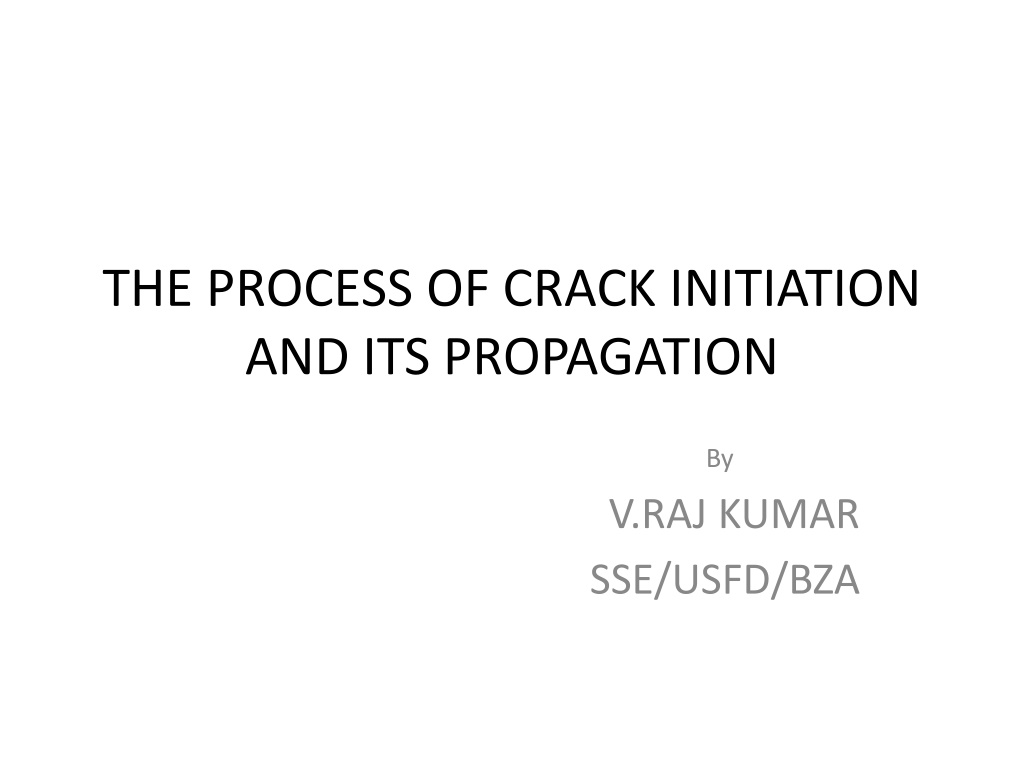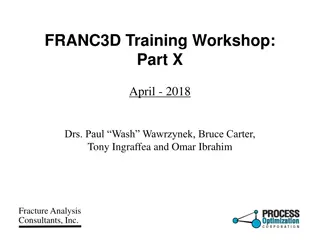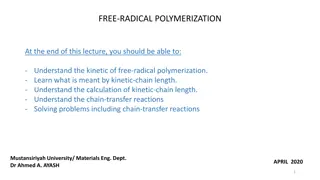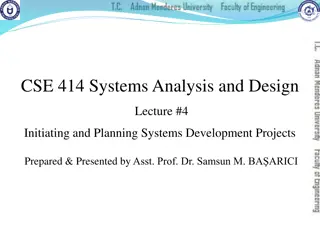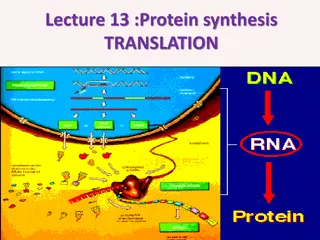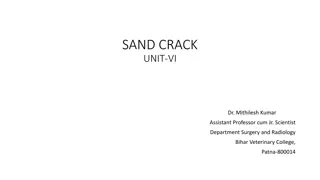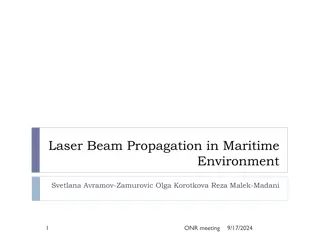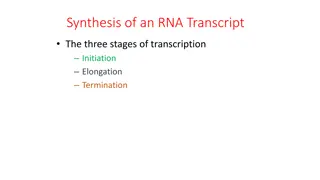The Process of Crack Initiation and Propagation
The process of crack initiation and propagation in materials is essential to comprehend for assessing fracture risk. This involves calculating defect sizes using fracture toughness values and understanding how cracks develop under repeated stresses, leading to fast fractures. The direction of crack propagation is influenced by material properties and metallurgical processes. The crack development process consists of stages like initiation, propagation, and eventual fracture, with cracks typically occurring at intervals along the rail surface.
Download Presentation

Please find below an Image/Link to download the presentation.
The content on the website is provided AS IS for your information and personal use only. It may not be sold, licensed, or shared on other websites without obtaining consent from the author.If you encounter any issues during the download, it is possible that the publisher has removed the file from their server.
You are allowed to download the files provided on this website for personal or commercial use, subject to the condition that they are used lawfully. All files are the property of their respective owners.
The content on the website is provided AS IS for your information and personal use only. It may not be sold, licensed, or shared on other websites without obtaining consent from the author.
E N D
Presentation Transcript
THE PROCESS OF CRACK INITIATION AND ITS PROPAGATION By V.RAJ KUMAR SSE/USFD/BZA
Cont. No material is free from defects, so it is essential that any crack-like defects are relatively harmless. Using values of fracture toughness it is possible to calculate the size of defect or magnitude of stress required to cause failure.
CRACK DEVELOPMENT PROCESS When magnitude are applied to a rail section, a crack is initiated after a certain number of cycles, which goes on propagating when stresses are repeatedly applied . repeated stresses of sufficient
Fast Fracture Fast fracture caused by growth of cracks, flaws or defects which suddenly become unstable & propagate at the speed of sound.
The direction of crack propagation depends on the rail material, the point of crack initiation and the kind of metallurgical processing or the heat treatment method adopted for that particular rail section.
Crack development process consists of three phases: crack initiation, crack propagation and fracture or rail break
Loading Direction of Travel Initial Crack Crack growth path Crack growth path Rail under Tension
Initial stage of development of gauge corner checking cracks
Sub-surface cracking associated with squat defect
the cracks are initiated at or very close to the rail surface, typically occur at about 2-5 mm intervals along the rail, and can grow to 2-5 mm in depth, at a downward angle of about 10 -30 to the rail surface, gradually spreading across the rail head. Once this occurs they usually break out as small wedges or spalls . Figure 9 (a) Transverse section of a rail showing the initial stages of development of checking cracks and spalls
Schematic representation of a fatigue fracture surface in a steel shaft, showing the initiation region, the propagation of fatigue crack (with beam markings), and catastrophic rupture when the crack length exceeds a critical value at the applied stress
squats (Longitudinal Section, rail contact surface is at the top of the photographs, x 50)
inclusion which can act as an initiation site for shelling and transverse defects
Rail and Wheel with Mesh and contact region
their internal nature, tache ovales cannot be visually detected, and hence must rely on regular ultrasonic rail inspection.
Small Transverse defect in the rail head initiated from shelling
The initiation of tache ovale defects is due to the presence of excessive levels of hydrogen in rail steel (or welds). Under normal circumstances, the steel blooms from which the rails are made or even the rails are slowly cooled over a long time to allow most of the hydrogen to diffuse out of the steel. If, however, the slow cooling process is inefficient, some hydrogen remains in the steel. The hydrogen atoms combine at preferred sites, such as grain boundaries or inclusions, and form molecular hydrogen. This process leads to marked increases in the internal pressure associated with the pockets of molecular hydrogen, which greatly enhances the risk of crack initiation. The initial, hydrogen induced, shatter cracking is illustrated in Figure 33. Improvements in steelmaking procedures have greatly reduced the risk of shatter crack development. Ironically, the reductions in the inclusion levels in the steel have also increased the potential for shatter cracks since there are now far fewer preferred sites for hydrogen segregation. Once the shatter crack develops, it can grow in a transverse plane through the combination of cyclic bending stresses, and longitudinal tensile thermal and residual stresses, in a similar fashion to transverse defects. In the case of tache ovales, wheel rail contact stresses have a negligible influence, because of the considerable depth from the wheel/rail contact surface of the initial shatter crack. Figure 33 (a) Initial Hydrogen Induced Shatter Crack
Surface of the crack after 7 crack growth steps
Sub-surface crack grown for 7 increments where the change in crack growth direction can clearly be seen
Planar view of the grown crack mesh
Mesh of the grown crack
Crack surface as generated during the crack growth
An additional concern is that the current ultrasonic inspection cycles have generally been determined with some idea of growth rates in the normal transverse defects. On the other hand, the growth rates of tache ovales are not known, and consequently may not suit the current cycles. 5.4 Treatment The principal treatment for tache ovale defects is to reduce the critical hydrogen content of the steel, by appropriate steelmaking and/or heat treatment procedures. The ultrasonic procedures adopted by rail manufacturers must also exhibit sufficient accuracy to allow the detection of any hydrogen cracking within the rail head. In this case, the ultrasonic testing needs to be conducted several days following rail manufacture, to allow sufficient time for any hydrogen cracking to fully develop. Once the affected rails are in track, the initiation and growth of the tache ovale defects may be inhibited by reducing the levels of applied nominal, dynamic and in particular impact wheel loadings (refer to Section 2). Finally, the ultrasonic rail testing procedures must be capable of detecting the tache ovales before they reach a critical size, that may cause rail failure.
